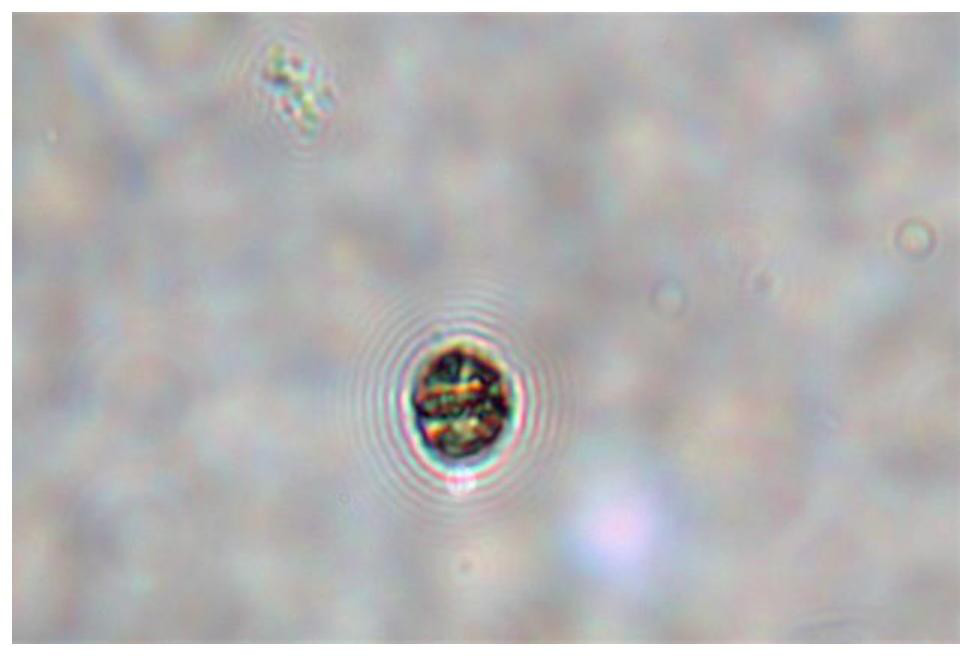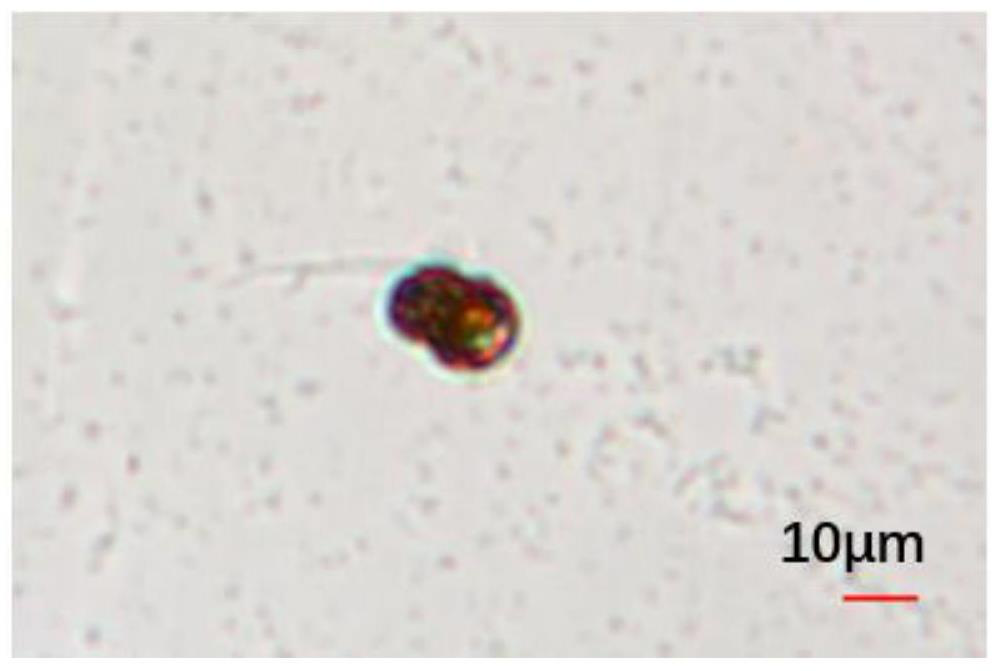Hermatypic coral symbiotic zooxanthellae algal species as well as separation and purification method and culture method thereof
A technology for separation and purification of corals, applied in the field of reef-building stony coral symbiotic zooxanthellae species and their separation and purification
- Summary
- Abstract
- Description
- Claims
- Application Information
AI Technical Summary
Problems solved by technology
Method used
Image
Examples
Embodiment 1
[0062] Take the flat brain coral live on the tray, pay attention to splashing seawater during the experiment, so as not to affect the health of the coral. Light the alcohol lamp and sterilize the mortar, tweezers and other tools. After disinfection, select plump and undamaged coral polyps for extraction, put the removed tissue into a mortar and grind, add buffer solution during the grinding, the buffer solution should not exceed 5ml, and grind until uniform to obtain a tissue suspension. Pour the tissue suspension into a test tube and shake vigorously. Take 1ml of the suspension and inoculate it into 9ml of F / 2 medium, and culture it for 10-15 days under 3000lx light at 28°C to obtain algae liquid in exponential growth phase. After culturing to the exponential growth stage, take the algae liquid and observe it under a microscope. After observing the swimming individuals with flagella, dilute and separate to obtain the single cell algae. Place the unicellular algae in a 1.5ml...
Embodiment 2
[0064] Example 2 Separation, purification and in vitro culture of reef-building coral polyp xanthellae
[0065] a. Burning tweezers, grinding pestle and mortar, set aside;
[0066] Burning uses 95% alcohol to burn the surface, and wait for the item to cool before using it. The above process should be carried out on an ultra-clean workbench;
[0067] b. Use tweezers to pick up the coral tissue, add buffer (EDTA buffer or sterile seawater) into the mortar, and grind evenly to obtain the original suspension A1;
[0068] c. Observe A1 under a microscope to confirm that there are free unicellular algae in the suspension;
[0069] The characteristic of Unicellular algae is that under the optical microscope, the isolated mature cells are round, the nail plate is not obvious, the whole is yellow-green, the size is 10-30 μm, no flagella can be seen, and there is no activity;
[0070] d. Take 1ml of the suspension and inoculate it into 9ml of F / 2 medium, and culture it under 6000lx li...
Embodiment 3
[0077] Example 3 The wide-spectrum temperature-adaptive experiment of reef-building coral zooxanthellae
[0078] Under the culture conditions of 28°C, 3000lx light, and a light cycle of 12 light: 12 dark, set four temperature gradient groups, respectively 18 ± 0.2 ° C, 22 ± 0.2 ° C, 26 ± 0.2 ° C, 30 ± 0.2 ° C, using F / 2 medium, the culture volume is 100ml. The initial concentration of algae cells was 2×10 3 cells / ml, cultivated for 10 days. From the first day of the experiment, take 0.1mL of algae liquid in 0.1mL plankton counting box every 2 days, count under the microscope to obtain the cell density (unit / ml), and take the average of three repetitions. The result is as follows:
[0079] Table 1 Effects of different temperatures on the density of symbiotic algae
[0080]
[0081] The results of the analysis found that the symbiotic algae (zooxanthellae) isolated from the Sinencephalus sinensis in the Wenchang sea area have a wide range of temperature adaptation and ca...
PUM
 Login to View More
Login to View More Abstract
Description
Claims
Application Information
 Login to View More
Login to View More - R&D
- Intellectual Property
- Life Sciences
- Materials
- Tech Scout
- Unparalleled Data Quality
- Higher Quality Content
- 60% Fewer Hallucinations
Browse by: Latest US Patents, China's latest patents, Technical Efficacy Thesaurus, Application Domain, Technology Topic, Popular Technical Reports.
© 2025 PatSnap. All rights reserved.Legal|Privacy policy|Modern Slavery Act Transparency Statement|Sitemap|About US| Contact US: help@patsnap.com



